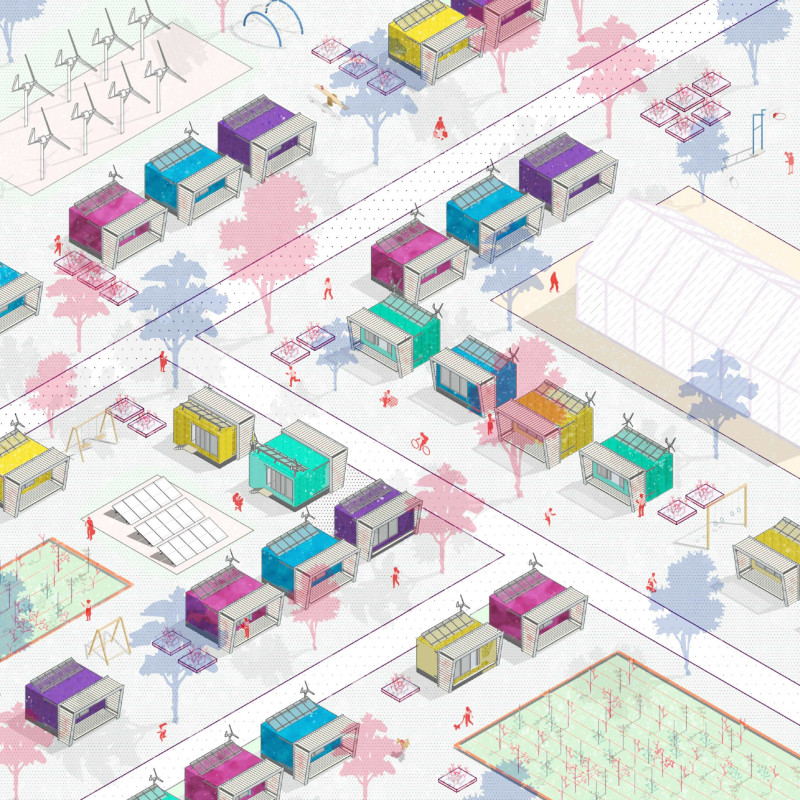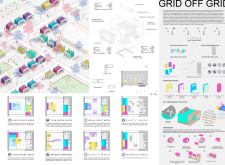5 key facts about this project
The design focused on tiny house living presents a practical solution for maximizing utility in limited space. It accommodates two residents, offering a flexible environment that caters to various lifestyle needs. The overall concept revolves around adaptability, allowing the space to serve multiple functions while maintaining a cohesive flow.
Design Concept
The approach is based on a "Grid off-grid" strategy, enabling the living area to adjust according to the users' requirements. This design allows different activities to take place simultaneously, effectively addressing the challenges common in tiny house living. The layout is carefully arranged to support overlapping functions, making it suitable for both personal and shared experiences.
Modes of Use
Eight distinct modes of use exemplify the layout's ability to adapt. Each configuration meets specific needs, whether it’s for sleeping, working, socializing, or exercising. Movable furniture boxes allow for easy rearrangement, presenting occupants with the option to customize the space according to their daily activities. This versatility is illustrated through modes like Night/Sleep Mode, Team Work Mode, and Party Mode, encouraging a smooth transition between tasks while ensuring comfort.
Materiality and Sustainability
A selection of materials reinforces the design's structural and aesthetic qualities. Key components include wood board, OSB (Oriented Strand Board), and a timber frame, which together create a solid framework. Wood fiber wool provides insulation, while a polyurethane liquid membrane ensures the space is waterproof. The inclusion of sliding glass doors with oak frames enhances natural lighting and merges indoor and outdoor environments.
Renewable energy plays a significant role in this design, with six 100W solar panels and a 1000W wind turbine for self-sufficient power generation. The introduction of a retractable staircase optimizes vertical space, crucial for the compact living style.
The modular design also encompasses movable boxes that serve essential furniture needs, like desks and chairs, allowing for varied activities. This high level of adaptability addresses the complexities of city living, where efficient use of space is essential. The project explores how architecture can respond to modern living demands while providing a comfortable and functional home.



















































